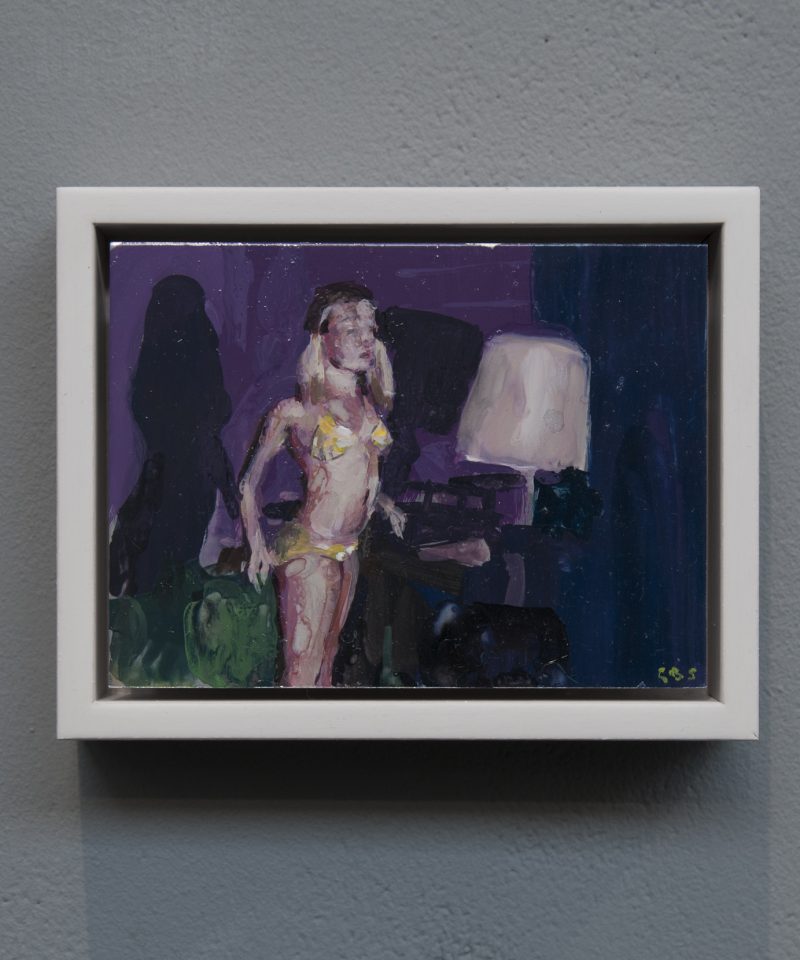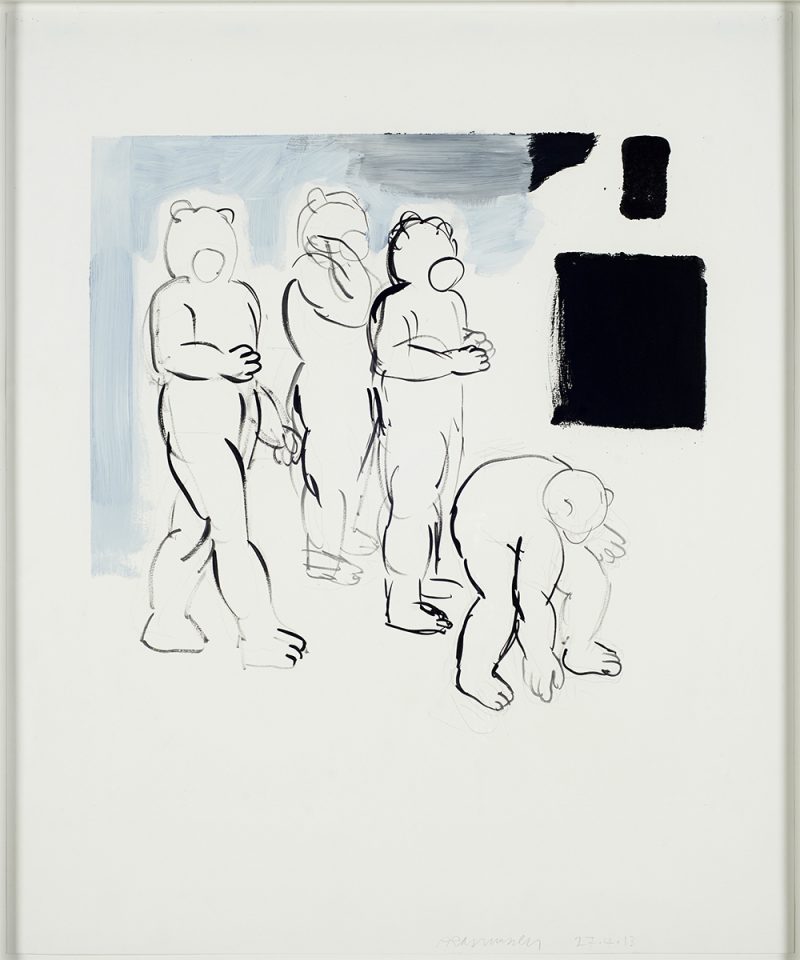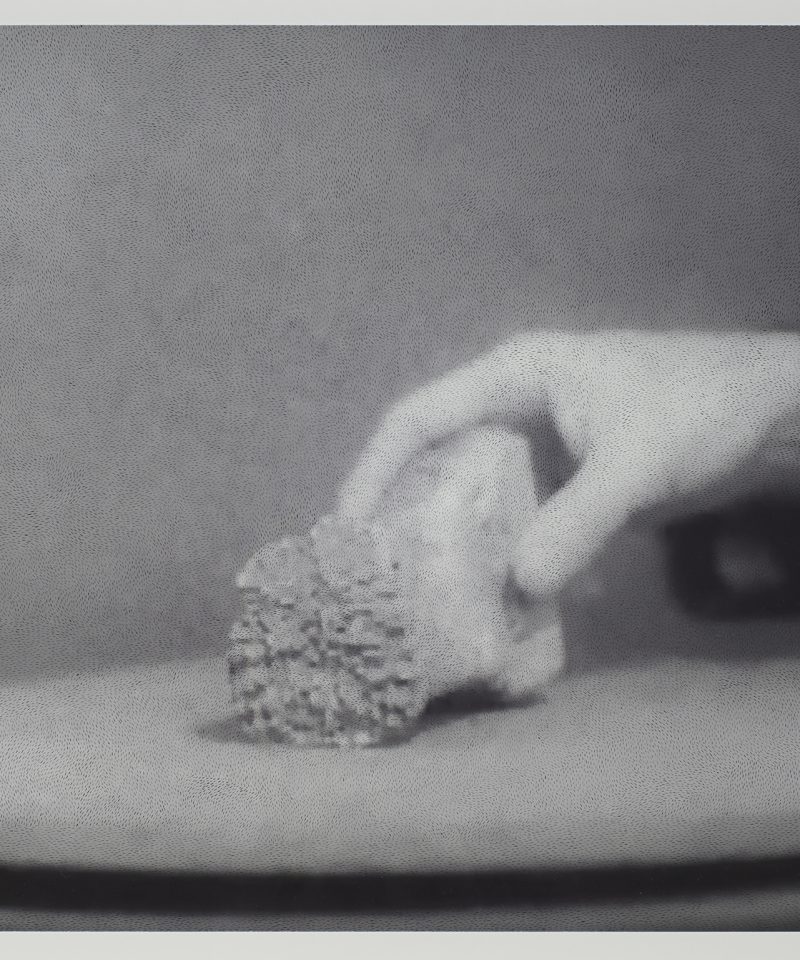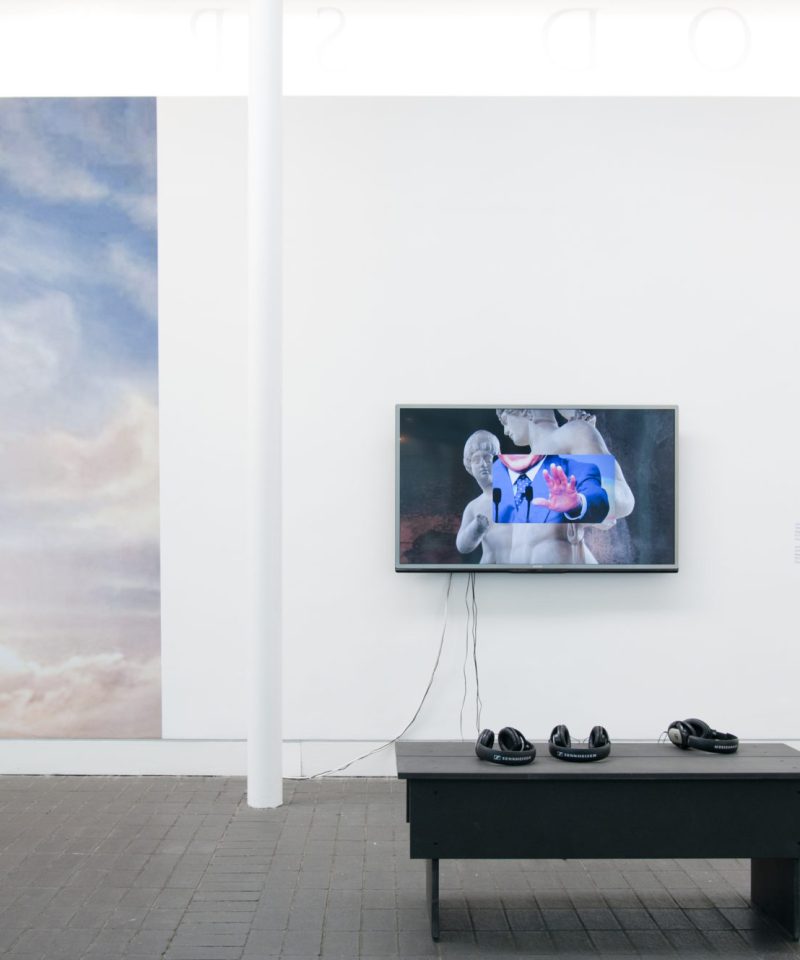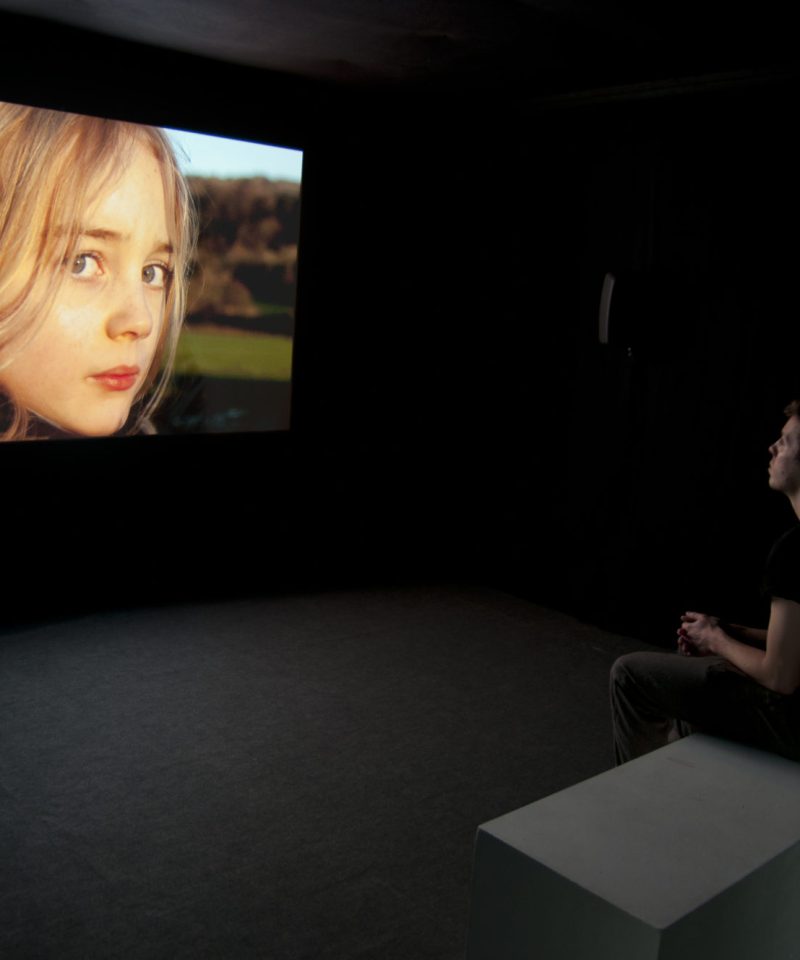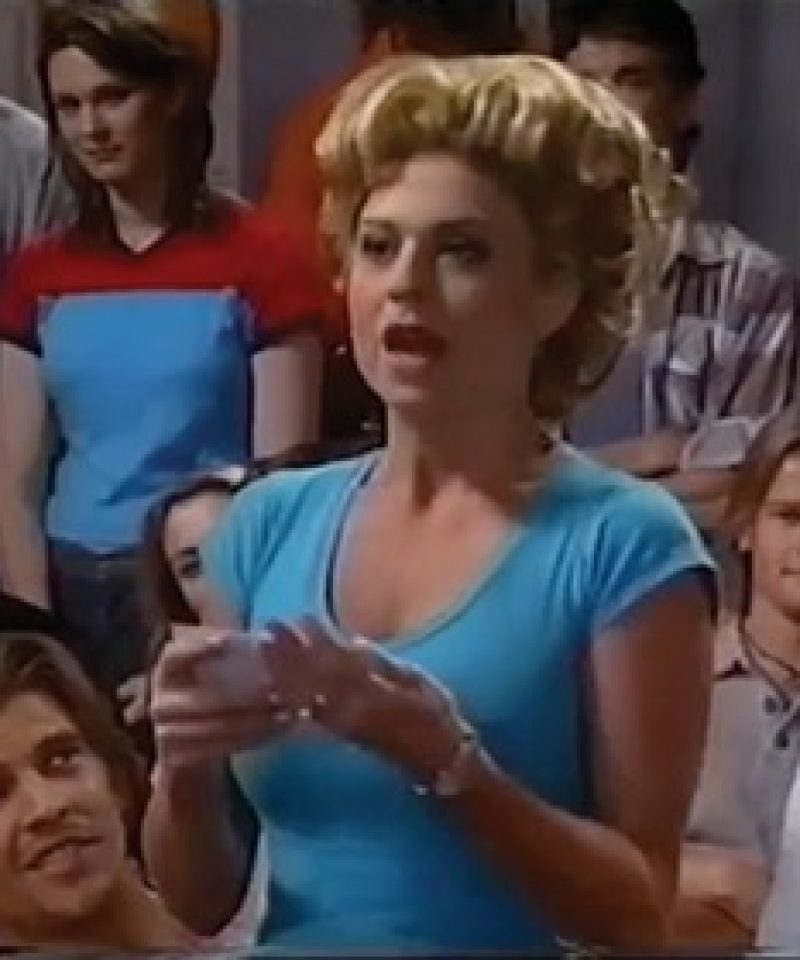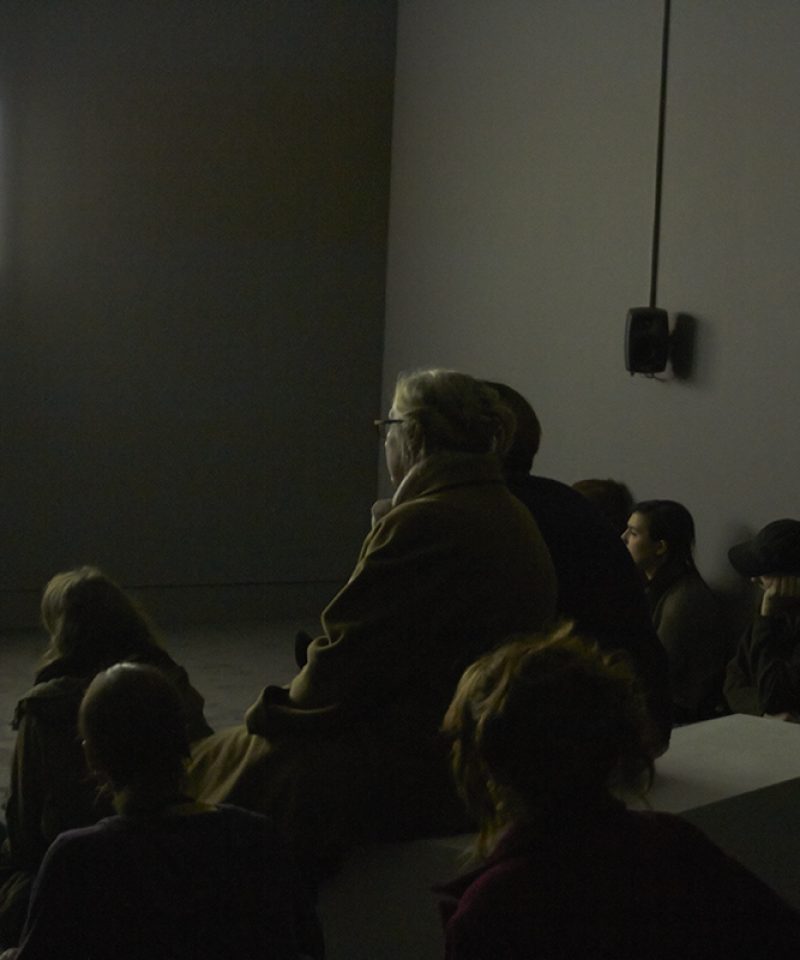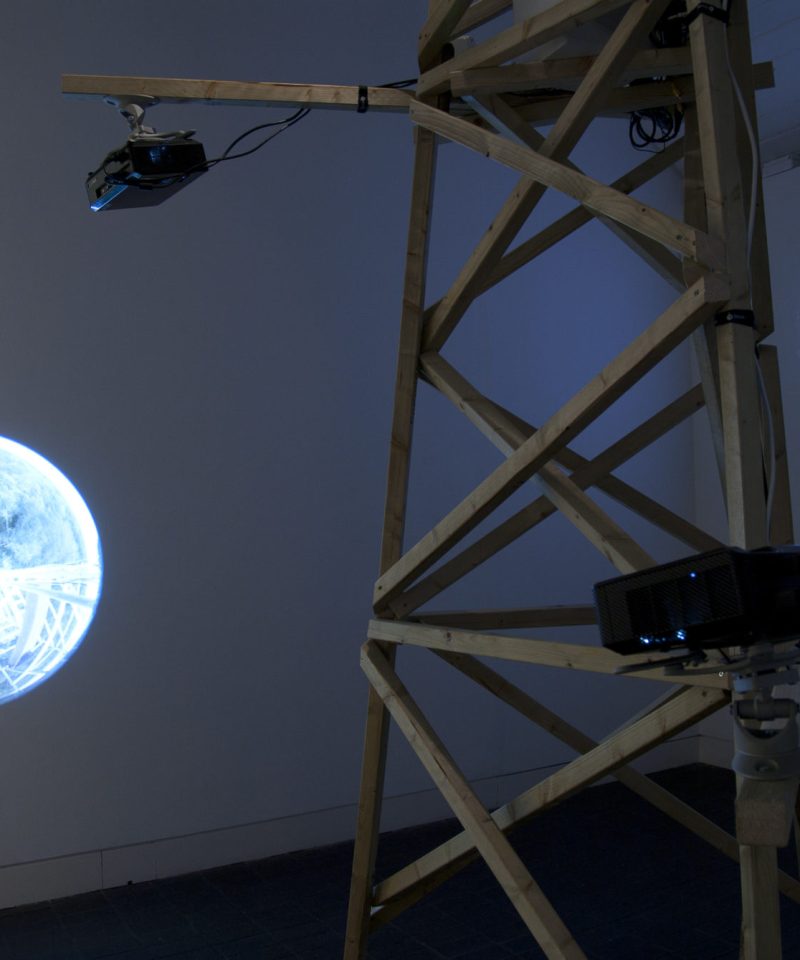I met up Marianna Simnett in the week before filming began on The Udder – her new work for the Jerwood/Film and Video Umbrella Awards: ‘What Will They See of Me?’ (WWTSM?) exhibition, the first stage of a major awards-giving process for moving-image artists in the first five years of their practice, a collaboration between Jerwood Charitable Foundation and Film and Video Umbrella.
How are you feeling about the shoot?
So much is reliant on these four days to go well, I’m finding the weight of it quite odd – as in heaviness, not the waiting! I’m very excited. There are a lot of unknowns – there are animals and children involved, there’s an element of chaos I’ve chosen. There’s something unpredictable about it, it’s going to be … hopefully good!
Talk me through who’s on the production team – the crew and the cast.
There’s me and the production manager, then a cameraman, a sound person, a lighting person, about five assistants and a friend also joining to keep me in check. There are five cast members – all people who relate to udders… OK, so I’ll talk you through those, there’s the farm manager of a farm in West Sussex where they have implemented robots instead of traditional herding methods. She is the mother and her real nine-year old daughter is the protagonist, although the real protagonist is the udder, which she is the substitute for. There are two brothers who are her siblings, who all met up for the first time yesterday. And there’s the herdsman, who is deaf, who hasn’t met anyone, and again, I don’t know what’s going to happen!
I can talk you through what it’s all about… The film is essentially about the threat of mastitis, an inflammatory disease of the mammary gland. All farms try to stave it off because it can effect milk production. Women get it as well when they breast feed, [the syptoms] can get very severe. It’s a big evil. There are lots of measures in place to stop it from happening as, you know, it’s insidious like any disease: you can be hosting it without showing any of the symptoms.
[The film] is partly about a pursuit into the anatomy of the udder down to a molecular level, at the same time it’s also about chastity (MS laughs) – this is where the young girl comes in. She plays a girl who doubles up as the udder. Her nose, which she tries to see the end of, by crossing her eyes repeatedly (MS demonstrates), like that, also doubles up as the end of the teat. [I was imagining] something about horizontality, but also looking down. The udder has this gravitational pull, it is so forced to be pointing down towards the mud, like an index finger pointing down, that’s why I like it as an object, reminding us about the ground.

Before I tell you about the narrative let me describe the two locations: There’s the documentary style filming which takes place on the robotic farm and then there’s the studio which is the interior of an udder which will be constructed out of theatrical skrim – a material which has hundreds of tiny holes in it so you can back and front light it. It has this membranous quality – it can be seen through or opaque depending on how you light it. Which for me is a nice minimalist gesture towards a construction which also relates to this skin, or surface. So the room is divided into quarters, like an udder which has four quarters and is hermetic – if one of them becomes diseased the other three remain perfectly fine. It has this beautiful organisation within it …
So an udder has four teats, and they each have their separate section, or…
Chamber, internally they’ve got their own chamber – some things can pass through the walls and some things can’t. It’s more complicated than that, I’ve cut one open myself and it’s not as clean… but that’s pretty much that’s what happens inside. So, the story is that the young girl gets chased out of the interior of the udder by her two brothers who plot against her, and she ends up on the outside of the farm, lost, a bit like ‘The Lion the Witch and the Wardrobe’. Meanwhile the mum is on the inside as well, her character is a prudish Victorian [figure], and is always shown behind glass – she’s repressed basically, she can’t get out! Whereas the young girl can get out and wants to and the mum tries to hold her back, and stop her from going outside, because she could be susceptible to disease, because she is the udder and if it’s outside mud can stick to it which contains bacteria which can develop into mastitis… But in terms of the girl it’s more about sex and chastity, and less about disease.
Then the herdsman character, he’s deaf, he is a 24 hour herdsman in real life. He oversees things. He needs to live very near the farm in case one of the robots goes wrong and he has to go and fix it. So his job is labour, well, lack of labour but he needs to be present all the time. This is what’s happening with the change in agriculture – humans don’t need to work as hard as before but they need to be there. He’s this all-seeing omnipotent guy, and he recognises that something’s going to happen to the girl. He’s the only one who can go outside He’s got a spiritual presence – he can see more, but hear less. The end of the story is that she cuts off her nose.
[Sharp intake of breath!]
She finds a blade in the mud which is the same blade that will be used for a post-mortem on an udder – I’ve got the blade on me, I can show you! So cutting off her nose is a reference to the nun, St Æbbe who cut off her nose to spite her face because the Danes were invading and she didn’t want to lose her virtue.
Is that where that phrase comes from?
Yes, I think so. So Simon, the herdsman, has an alarm that goes off, but because he’s deaf he can’t hear it, so sometimes his wife has to elbow him! In the film he does miss the scene of her cutting off her nose, and returns to the udder to tell the two boys who then discuss what will happen to her. The older one thinks she will be fine because she has inherent chastity and the power to stave off danger of the worst kind, and the younger brother, who’s more practical thinks because she’s really pretty people will flirt with her.

She does get seduced, by herself, wearing red lipstick, but Simon heals her before she goes back into the udder. Maybe you’ve seen the miracle scene in The Gospel According to St. Matthew (1964) by Pasolini? It’s a bit naff but basically a leper is cured by the word of God… So the herdsman heals her with his words and she returns to the udder as if nothing’s happened but her lipstick is smudged – while she seduces herself she applies and wipes off lipstick, in a Brechtian [performative] sense . By the end of the scene she’s smudged, you don’t know if she’s good or bad. And that’s it!
Wow! When you were at the proposal stage did you know about all the intricacies of the script?
Not really. I’d heard about this method called decapitation secretion, which is where a portion of cells in the udder pinches off and becomes milk – so I was interested in the brief of ‘WWTSM? where you have to martyr a bit of yourself, in order to be yourself, in a paradoxical way. So in the cells themselves they’re ridding themselves of themselves in order to become the milk we drink. So that turned into the decapitation of the nose, and it all folded into itself quite naturally.
Do you see this as a pilot for a longer piece?
Yes, it’s a pilot – I’d like to work with the same people again. If I did get through to the second round I would make it more about mastitis having occurred rather than it being an outside threat. This film is more about cleanliness and trying to maintain order. (MS pulls out a text book and shows me pictures of some infected udders) It would be more an investigation into the actual disease itself. It is a metaphor about our relationship to technology and other things, so I’m not done with it. Here’s a really gruesome one, look…
Do you feel you need to know that level of detail about the biology of the udder?
I don’t need to no, but something happened at the end of my MA when I started looking at brains – I read a book by Catherine Malabou about trying to become conscious of the consciousness our brains – the organ has a type of psyche. Thinking about science not being opposed to psychoanalysis – a new branch emerged called neuro-psychoanalysis which merges the two. So organs aren’t just boring things in books – they actually contain a jewel … I feel like it’s shunned because it’s boring and too stiff, I’d like to shake it up a bit – to marry it with something that’s more fictional and energised.
Have you read about Object Oriented Ontology?
Not really, I don’t really like buzz terms. It’s like when we were all talking about ‘affect’ on my MA .… it felt very institutionalised, but now I’m out of it I feel I can dip in and out of it. Why do you ask?
Well, I think of WWTSM? as a type of othering – viewing yourself from an undisclosed point. I imagine organs and animals, things which we have a conception of according to their functionality being re-read through this new type of philosophy. I’m interested in how much is [the story] your imagination, or facts, or your experience? Do you feel through your filmmaking, you’re constructing a type of consciousness?
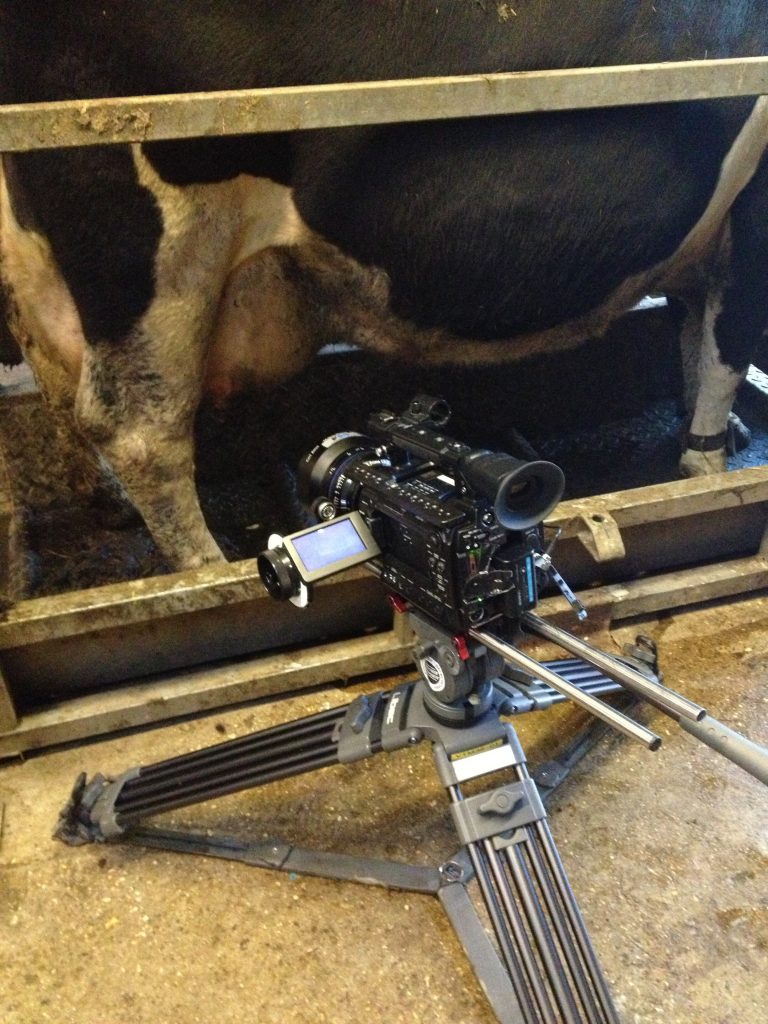
There are personal experiences in it. Even down to the story of not being able to play outside, that happened, and the crossing the eyes – it did used to frustrate me that that was the only part of the face that you could see – it felt wrong! There are so many brilliant things that happen when you allow a project to completely dominate you, and that’s what it’s done.
Why an udder? It’s a strange thing to isolate from a cow, but I guess it has the most relevance to us…
I’m trying to take away the panto-quality from it. I liked it because of how heavy it was, how it looked severed from the body. Like it had almost dropped outside of the tummy, organs are meant to be inside.
SK: Apart from one… the phallus!
MS: OK, yes. But something’s not right about it, it’s supposed to be tucked up! Anyway, hopefully I can do something that won’t make people snigger. The udder’s weird because it also looks really phallic at times, it’s got both genders, I feel it’s like an asexual object.
SK: Why is it a symbol of chastity?
MS: It’s not. I made that up! Also it’s a lie I like because also the only way a cow can produce milk is to feed a calf, so it can’t be. There’s a wrongness about the facts I quite like. Have you heard of the Sworn Virgins from Albania? They are women who dress as men and swear an oath of chastity to their neighbours. It’s how fiction, drag or role-play can become actualised within a society despite everyone knowing they’re not. So in relation to your question – is an udder chaste? No, it’s definitely had to have sex, but if we say it is then maybe it can be, in a drag kind of way. Just because we say so.
SK: So far you’ve been working on the conceptionalisation and the logistics of the project, how will the next of week of the production go?
MS: The first day in the studio we’ll build the set with the crew, then we’ll spend the next day shooting, everyone’s coming, then there’ll be two days on the farm. The last day will be just me and a friend collecting little things – filming udders and things like that. I’ve written a song as well! It’s about mastitis and chastity, she’s going to be singing it as a solo / duet with herself in front of the robot, and the chugging of the machine will provide the beat. A little ditty…
*
The pictures were collected during the following week’s filming – from the shoot in the Docklands studio and on the farm in West Sussex.
The Jerwood/FVU Awards: ‘What Will They See of Me?’, are a collaboration between Jerwood Charitable Foundation and Film and Video Umbrella in association with CCA: Centre for Contemporary Arts, Glasgow, and supported by University of East London, School of Arts and Digital Industries. Film and Video Umbrella is supported by Arts Council England.
Images: Marianna Simnett’s The Udder (2014), courtesy of Film and Video Umbrella and Jerwood Charitable Foundation.

